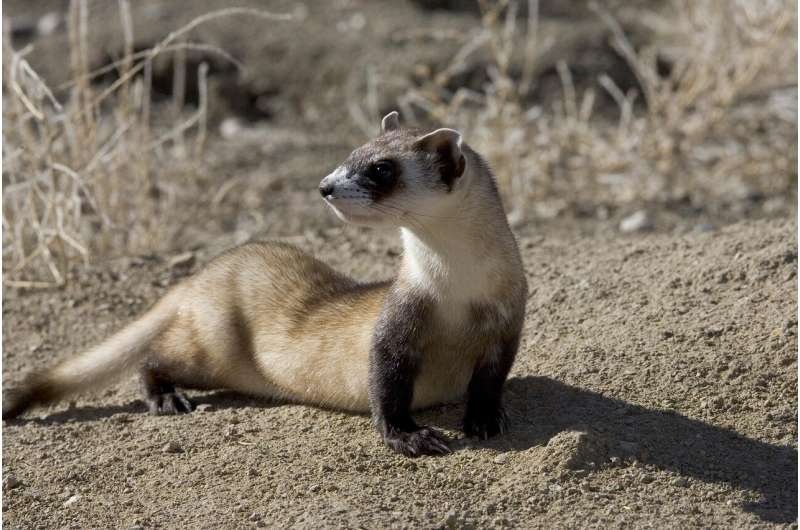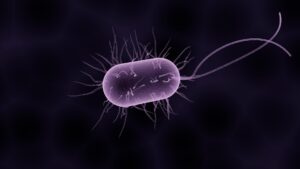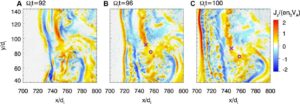

For the first time, an endangered black-footed ferret named Antonia that was cloned from cryogenically-preserved tissue has given birth to two kits.
It’s a mouthful; and a technological breakthrough.
But Ronald Sandler, a professor of philosophy and director of the Ethics Institute at Northeastern University, says that the birth doesn’t mean biotechnology can replace traditional conservation practices.
“None of this is a substitute for the more traditional conservation practices like habitat protection, limits on taking, pollution remediation, etc. It’s just another tool for species that are already very at-risk,” says Sandler, who has analyzed the ethics of the black-footed ferret cloning program. “This is last-ditch, emergency effort kind of stuff.”
The black-footed ferret is one of America’s most endangered mammals and was considered extinct until a small population was discovered in Wyoming in 1981. Strategies including captive breeding, reintroductions and habitat protection have helped restore the wild population to more than 300 animals.
That population, however, had gone through a population bottleneck that resulted in inbreeding and a lack of genetic diversity. Cloning, using genetic material cryopreserved decades ago from a different population, is intended to help address that problem.
Sandler says the cloning program took a big step with the recent birth.
The first black-footed ferret that was successfully cloned, Elizabeth Ann, could not have offspring.
Antonia, like Elizabeth Ann, also is a product of what is called cross-species or interspecific cloning—the egg and surrogate were domestic ferrets.
Moreover, the birth may have implications for species beyond ferrets, for example the northern white rhinoceros.
“It’s the first project to show that you might be able to use cryopreserved tissue cloning to be able to introduce new genetic material into an at-risk population,” Sandler says. “You have at-risk species, and if you can bank some of their tissue, then later on there’s a chance we can use that tissue to help restore the species.”
However, there are a few caveats.
The kits are not going to be released into the wild ferret population.
“There’s a lot to do to make sure that they’re healthy, that they can reproduce, that there’s not going to be any kind of detrimental effects,” Sandler says. “There’s a number of generations before the confidence is high enough that they’re going to be not detrimental to the population, and then they’ll probably be very slowly and carefully integrated into the population.”
There are also some important philosophical questions to be considered.
“I think the bigger picture here is thinking about the ways in which biotechnology in conservation opens up new possibilities of not only conserving species, but possibly facilitating adaptation,” Sandler says.
Other questions include what is the value of cloning an endangered species if there is no habitat for it to live in due to urbanization, climate change or other anthropogenic causes?
Take the northern white rhino, another species Sandler has considered, and a species with only two existing animals.
“Maybe their populations could be rebuilt, and that would be very interesting and scientifically amazing, but it’s not real conservation unless you also protect their habitat and you’re able to put them back into that habitat,” Sandler says. “Otherwise it’s just kind of a curiosity, it’s like a sideshow or they’re just in a zoo. It’s like a museum.”
In short, while Antonia’s offspring represent an important “step” in a new tool toward restoring endangered species, there’s a lot more to consider.
“As amazing as the technological advances are, it’s important not to lose sight of the goals of conservation and the importance of conservation generally,” Sandler continues. “We shouldn’t get overly distracted by the ‘wow’ of the technology and lose sight of the importance of conservation practice.”
Provided by
Northeastern University
This story is republished courtesy of Northeastern Global News news.northeastern.edu.
Citation:
Cloned black-footed ferret birth sparks ethical debate—why that is a big step, but not a substitute, for conservation (2024, November 11)
retrieved 11 November 2024
from https://phys.org/news/2024-11-cloned-black-footed-ferret-birth.html
This document is subject to copyright. Apart from any fair dealing for the purpose of private study or research, no
part may be reproduced without the written permission. The content is provided for information purposes only.

